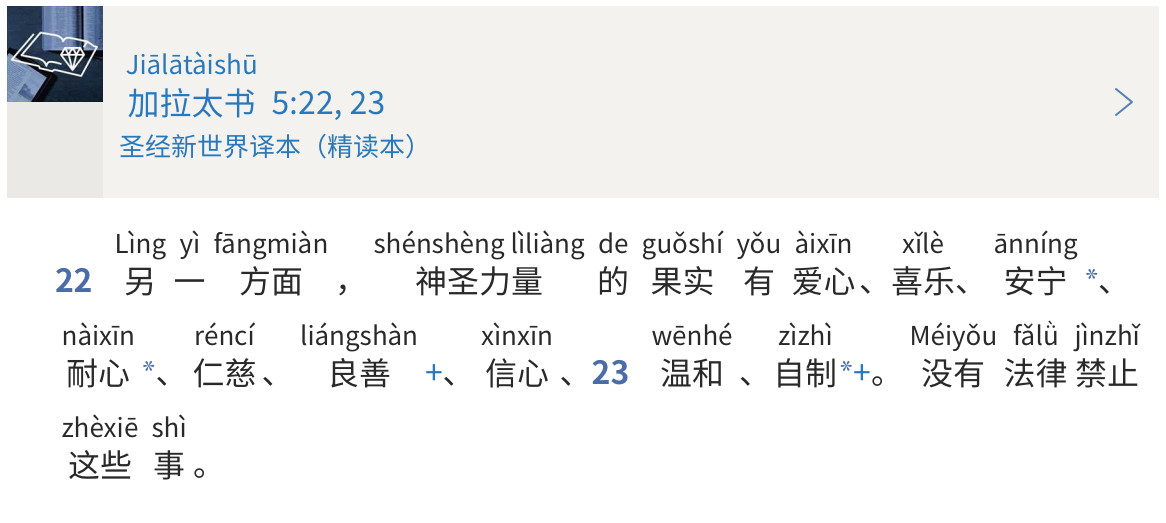yùgào (yù·gào fore·told | {in advance} · {had told} 预/豫告 預/豫告) ← Tap/click to show/hide the “flashcard”
On February 24, 2022, Russia sent significant military forces into Ukraine, resulting in the largest scale open warfare in Europe since World War II. Knowing certain Mandarin expressions will help us in the Mandarin field as we hear about and talk about Ukraine in the time ahead.
An article about this situation that has been featured on jw.org is “Russia Invades Ukraine”. In the Mandarin version of this article, “yùgào (yù·gào fore·told | {in advance} · {had told} 预/豫告 預/豫告)”, this week’s MEotW, is used to correspond with the English word “foretold”.
Note that the morpheme “yù (fore-; {in advance} 预/豫 預/豫)” that’s in “yùgào (yù·gào fore·told | {in advance} · {had told} 预/豫告 預/豫告)” is a bound form that also appears in past MEotW “yùyán (yù·yán {in advance} · say[ing] → [prophecy | prophesy] 预言 預言)”, “yùjiàn (yù·jiàn fore·seeing | {in advance} · seeing 预见 預/豫見)”, “yùliào (yù·liào {in advance} · {to expect; anticipate; foresee; infer} 预料 預料)”, etc.
Bound Forms
The ABC Chinese-English Dictionary, edited by John DeFrancis and Victor H. Mair, among others, tells us the following about the entries in it that are marked as bound forms:
B.F. (Bound Form, Niánzhuó Císù 粘着词素).
Morphemes which do not function as free words in a sentence and cannot be handled using one of the other bound category labels, such as prefix, suffix, measure word, or particle. A given character may represent a free word in one or more of its meanings but a bound morpheme in other meanings. E.g. qiǎng 抢 is a bound form meaning ‘take emergency measures’ in qiǎngshòu 抢收 but a free form as a verb meaning ‘pillage’.)
In addition to these meaningful bound forms, which we define and illustrate with one or more examples, there are many characters which have no meaning of their own but simply represent a syllabic sound. E.g. 8pú 葡 and 6táo 萄 in pútao 葡萄 ‘grapes’. For these entries we provide neither entry label nor definition but simply note words in which the character occurs.
“Foretold” Examples
Here are some examples of how “yùgào (yù·gào fore·told | {in advance} · {had told} 预/豫告 預/豫告)” is used in the above-mentioned article on jw.org:
English:
What significance do events like this have according to the Bible?
Mandarin:
📖 📄 📘 Zhèyàng (Zhè·yàng this · kind 这样 這樣) de (’s 的) dàshì (dà·shì {big → [major]} · events 大事), gēn (with 跟) Shèngjīng (Shèng·jīng (the) Holy · Scriptures → [the Bible] 圣经 聖經) yùgào (yù·gào fore·told 预/豫告 預/豫告) de (’s 的) shì (things 事) yǒuguān (yǒu·guān have · {closing → [connection]} 有关 有關) ma ([? ptcl for “yes/no” questions] 吗 嗎)?
English:
Jesus Christ foretold a time when “nation will rise against nation and kingdom against kingdom.” (Matthew 24:7) …the Bible shows that wars today fulfill Jesus’ prophecy.
Mandarin:
📖 📄 📘 Yēsū (Jesus 耶稣 耶穌) yùgào (yù·gào fore·told 预/豫告 預/豫告): “Mínzú (Mín·zú {(of) people} · nationality → [nation] 民族) yào (must → [will] 要) gōngdǎ (gōng·dǎ attack · strike 攻打) mínzú (mín·zú {(of) people} · nationality → [nation] 民族), guójiā (guó·jiā nation · family → [nation] 国家 國家) yào (must → [will] 要) gōngdǎ (gōng·dǎ attack · strike 攻打) guójiā (guó·jiā nation · family → [nation] 国家 國家).” (Mǎtài (Matthew 马太 馬太) Fúyīn (Fú·yīn Blessings · News 福音) 24:7) Jīntiān (Jīn·tiān present · {sky → [day]} → [today] 今天) shìshang (shì·shang {generation → [world]} · upon 世上) fāshēng (fā·shēng {issuing forth} · {coming to life} → [happening] 发生 發生) de (’s 的) shì (things 事) gēn (with 跟) Yēsū (Jesus 耶稣 耶穌) yùgào (yù·gào fore·told 预/豫告 預/豫告) de ({’s (things)} 的) yízhì (yí·zhì {(are of) one} · sending → [are consistent] 一致).
